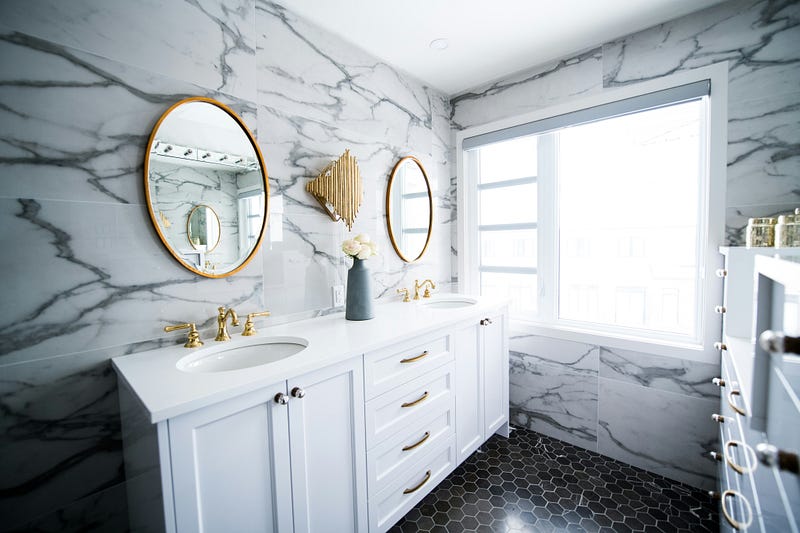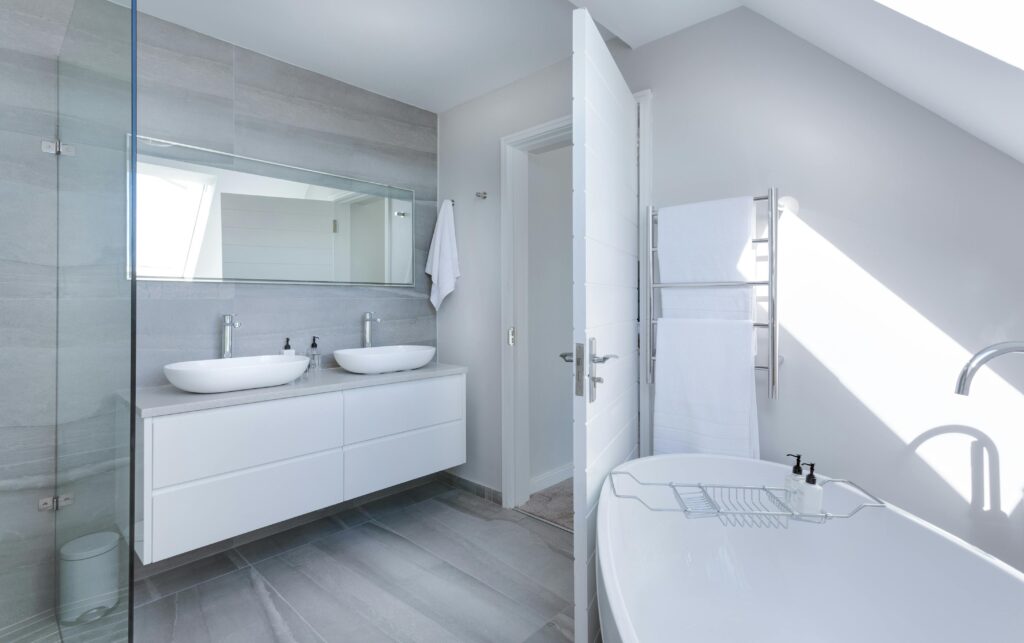Bathroom Design for the Future: Tips for Aging in Place
Modern ways of encouraging you to stay in your house for as long as possible while reducing the need for expensive and disruptive future alterations are the primary objectives of aging-in-place design concepts for your bathroom. Speaking about becoming old or discussing people’s mortality is taboo in many cultures. However, true to the facts, you will age and need some bathroom renovation to help you in the future.
An “aging-in-place” bathroom layout helps make the bathroom useful to everyone, including the elderly and people with disabilities. As we will cover in this article, these additional elements aid in the usability of a bathroom. Modern interior designers add top-notch design technology to make the bathroom appealing and accommodating, even for future uses.

Reasons to Consider an Age-In-Place Bathroom Design
A secure bathroom area in a house is essential since the number of older citizens is rising, and many want to live their golden years in their homes. According to research by the National Library of Medicine, the elderly are frequently most vulnerable in bathrooms because of the possibility of falls, accessibility issues, and other dangers. We will look into the critical considerations for an aging-in-place bathroom design.
- Non-slip flooring: According to the Consumer Product Safety Commission (CPSC) in the USA, with an estimated 70 deaths per year, slick flooring is one of the leading causes of bathroom mishaps. Investing in textured surfaces or non-slip tiles decreases this danger.
- Walk-in showers: Curbless showers make it simple for everyone to enter and exit by removing the need to step over a potentially dangerous barrier.
- Grasp bars: A well-positioned grasp bar may save lives, particularly in wet environments like the shower or near the toilet.
- Adaptable features: Features that can adapt to the user’s height, such as showerheads or worktops, can be revolutionary in terms of comfort and use.
- Broader entrances: Facilitate smooth and hassle-free access for individuals who use mobility equipment via broader entrances.
- Shower bench seating: This feature lets people sit while showering if necessary. It is both comfortable and safe.

Benefits of an Aging-In-Place Bathroom Design
Designing a bathroom that is aging-in-place friendly involves making it comfortable for older people by considering their needs and preferences. The advantages of an aging-in-place bathroom design include more autonomy, increased comfort, and increased safety. Let’s examine the benefits of creating a bathroom, especially one intended for aging in place.
- Enhanced security: While designing an age-in-place bathroom, safety comes first, and the elements used are meant to minimize accidents and injuries. For example, slip-resistant flooring materials — like textured tile flooring — can help curb the possibility of slips and falls on wet surfaces. In addition, grab bars placed strategically help while stepping in or out of the shower, using the tub, or going to the toilet.
- More comfort and accessibility: improved lighting, occupancy sensors, wall-mounted sinks, expanded doors, handheld showerheads, walk-in tubs, low-curb or curbless showers, and bigger maneuvering spaces are just a few examples of user-friendly fixtures that should be in bathrooms built for older residents to increase comfort levels.
- Increased self-sufficiency: Bathroom designs that accommodate aging-in-place encourage independence by enabling individuals to carry out their everyday activities independently of outside help. By including universal design components, these bathrooms may accommodate individuals with varied mobility and agility, enabling them to live peacefully in their homes for longer.
What is the Cost Involved in Remodeling an Aging-in-Place Bathroom?
Fixr statistics claim that remodeling an aging-in-place bathroom can range from $3,000 to $15,000, depending on clients’ design choices and specifications. Other factors that will influence the price of the redesign include:
- The small bath size.
- The type of materials used.
- The existing or removed features of the bathroom.
- The original design of the bathroom.
Still, think of this as a priceless investment. It guarantees that you or your loved ones may live in the house securely and comfortably from now on, which might save on future medical costs from avoidable accidents. It’s always advisable to speak with an expert for precise pricing.

Wrap-Up: Design for the Future
As we end, the preceding advice will help guarantee that your aging-in-place bathroom gets designed successfully and continues to offer safety, comfort, and independence for many years.
Aging-in-place design is an excellent approach to ensuring your house’s atmosphere stays safe and comfortable for you and the elderly people you care about as you age. Remember that every person has different needs, so speak with a qualified design-build remodeling contractor to create an aging-in-place bathroom design that fits your house and way of life.
Citations
- Stevens, J. A., Mahoney, J., & Ehrenreich, H. (2014). Circumstances and outcomes of falls among high-risk community-dwelling older adults. Injury Epidemiology., 1(1). https://doi.org/10.1186/2197-1714-1-5
- CPSC releases a new study on bathtub and shower injuries. (n.d.). U.S. Consumer Product Safety Commission. https://www.cpsc.gov/Newsroom/News-Releases/1975/CPSC-Releases-New-Study-On-Bathtub-And-Shower-Injuries
- Fixr.com | Cost of Aging in Place | Remodel for aging in place. (n.d.). https://www.fixr.com/costs/aging-in-place-remodeling
Author
-
I'm a graduate civil engineer, studied at Jomo Kenyatta University of Agriculture and Technology (JKUAT) and Kenya Institute of Highways and Building Technology (KIHBT), both in Kenya, Major Engineering Projects Performance (Uni of Leeds, UK) with an academic background major in Highways and Transportation Engineering. I also practice in Engineering Project Management, Construction Materials, and Infrastructure Cost Estimation. I’ve worked across a range of real-world projects in Kenya—from public roads transportation infrastructure (KeRRA), Water and Sanitation Systems (NYAHUWASCO, NYANDAWAS & LAWASCO) to both public (MOTI-Public Works) and private sector, high-end residential and commercial building units. Over the years, I’ve also developed a passion for technical writing, sustainability, and emerging construction technologies.

